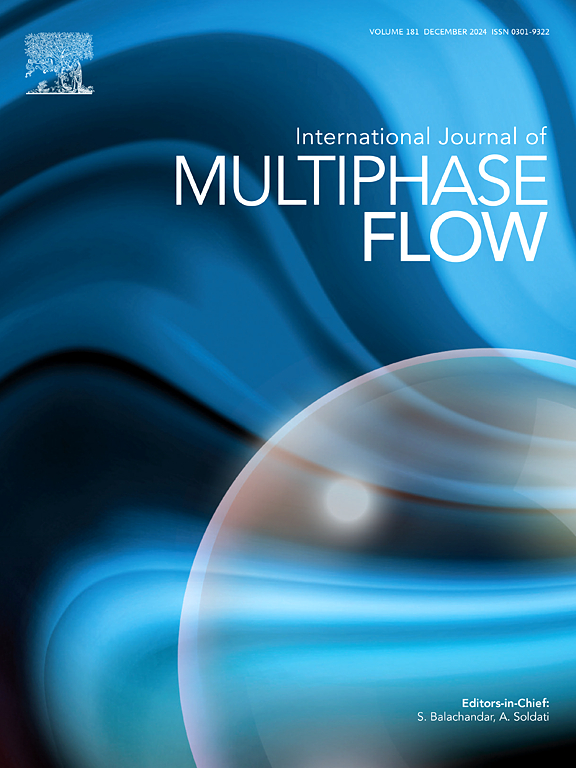Coalescence dynamics of a nanoparticle-laden droplet at oil-water interface under electric field: A molecular dynamics simulation
IF 3.6
2区 工程技术
Q1 MECHANICS
International Journal of Multiphase Flow
Pub Date : 2025-01-04
DOI:10.1016/j.ijmultiphaseflow.2025.105129
引用次数: 0
Abstract
Droplet deformation, coalescence, sedimentation and droplet-interface coalescence are common phenomena during crude oil electrodehydration. This paper investigates the coalescence dynamics of a nanoparticle-laden (NP-laden) water droplet at the oil-water interface under direct current (DC), alternating current (AC), and pulsed (PE) electric fields, using molecular dynamics (MD) method. Validation studies demonstrate strong quantitative and qualitative agreement between the experimental and numerical results. The results show that complete droplet-interface coalescence (CC), encompassing both typical and upheaval modes, as well as partial coalescence (PC), occurs under DC fields and is influenced by ion migration mechanisms. The critical cone angle transitioning from CC mode to PC mode is 47.03°, and the critical electric capillary number (CaE) decreases with increasing droplet-interface distance. Moreover, a robust quartic polynomial function relationship between dimensionless liquid bridge width W* and dimensionless time t* is established to describe liquid bridge evolution. The occurrence of CC mode is significantly more pronounced under AC and pulsed fields compared to DC fields. The optimal dimensionless frequencies are identified as f*=16 for AC fields and f*=25 for pulsed fields. Total interactions (TI) analysis shows that the coalescence efficiencies rank as follows: PE > DC > AC. The findings of this study offer significant potential for optimizing high-efficiency and compact electrostatic coalescence equipment.

求助全文
约1分钟内获得全文
求助全文
来源期刊
CiteScore
7.30
自引率
10.50%
发文量
244
审稿时长
4 months
期刊介绍:
The International Journal of Multiphase Flow publishes analytical, numerical and experimental articles of lasting interest. The scope of the journal includes all aspects of mass, momentum and energy exchange phenomena among different phases such as occur in disperse flows, gas–liquid and liquid–liquid flows, flows in porous media, boiling, granular flows and others.
The journal publishes full papers, brief communications and conference announcements.

 求助内容:
求助内容: 应助结果提醒方式:
应助结果提醒方式:


